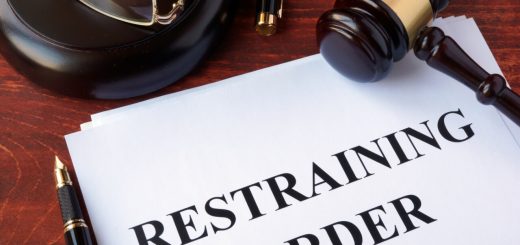Can You File Bankruptcy on Student Loans

If you are struggling under the weight of your student loan debt, then there is a good chance that you have considered filing for bankruptcy. With so much misinformation out there, it is important to learn more about these bankruptcy laws and how they can help you.
Most information on student loans states that you cannot discharge student loan debt in bankruptcy by any means. This can cause some people to think they are out of options. However, this is not true.
So, can you file bankruptcy on student loans? If you have private student loan debt and you want to eliminate the debt and avoid paying your loans, then you do still have a way out. Continue scrolling to learn more!
What’s Student Loan Bankruptcy?
It should be noted that there’s no student-loan-specific bankruptcy. Chances are you’ve heard or read that student debts aren’t dischargeable in bankruptcy even if you have a good credit score. The truth is oversimplified in such a statement.
In some situations, you will still be able to discharge your student loan. However, the procedure is much more difficult compared to other kinds of unsecured debts. There is an extra step that involves filing an adversary proceeding.
Related: How To File For Bankruptcy In Hawaii
Fresh Start Through Bankruptcy Act
With the introduction of the bipartisan bill, filing bankruptcy on student loans has become much easier. You need to pass it, though. If you’re one of those people who struggle with student loan debts, then it’s likely you know about the Fresh Start Through Bankruptcy Act.
This act is created specifically for borrowers with federal student loans. It helps them restore their ability to seek a bankruptcy discharge. They can take advantage of it ten years after their 1st student loan payments eventually come due.
Likewise, in case of undue hardship for student loans, the discharge option can be retained. Of course, you will have to prove undue hardship first. Keep in mind that it only applies to private as well as federal student loans, providing that they are due for less than ten years.
Chapter 7 & Chapter 13 Bankruptcy
Another thing you should know about student loans is that there are 2 types of bankruptcy: Chapter 13 and Chapter 7. Either way, certain debts don’t have to be repaid in case of a successful filing. Besides, any debt collection activity like wage garnishment will end.
As far as Chapter 7 bankruptcy is concerned, it is possible to discharge student loans sooner without a repayment plan. Yet any debts are paid off by selling eligible assets to discharge the remaining debt.
Chapter 7 bankruptcy cases can be reopened after being closed. This will not eliminate the discharge that has already been acquired for debt.
Chapter 13 bankruptcy is geared towards people who are not able to pass Chapter 7. Borrowers also turn to it to eliminate the risk of losing their house to foreclosure in the event of significant home equity.
Under this chapter, there is a payment plan that allows filers with consistent incomes to clear their debt within 3 to 5 years. After that time, any remaining debt will be discharged.
Okay, we’ve seen all the benefits of these chapters, but what’s the catch? The catch is that your credit report will have visible bankruptcy for a certain amount of time – 7 years when it comes to Chapter 13 and ten years when filing for Chapter 7 – in both cases.
Apart from that, you may potentially stay without the collateral that’s meant to back your secured debt, such as a mortgage that has a legal claim (or a lien) against it or has not been paid. To avoid this scenario, select Chapter 13 and save yourself a headache.
Student Loans & Undue Hardship
Before opposing your petition, it is still necessary to calculate undue hardship to evaluate the litigation costs.
If these costs are higher than 1/3 of all the money you borrow, the Department of Education will enable your lender to support the claim that pertains to your undue hardship. Please note that it only applies to federal loans. The total amount someone owes on his/her loan may include everything from the principal to collections costs and interest.
When determining undue hardship, the bankruptcy courts use multiple tests. For example, the Brunner test is used in most states. It is intended to assess the financial situation (both current and foreseeable future situation) of the borrower.
The court will also take into account a few factors to make sure loan repayment wouldn’t result in an undue hardship.
- The court will check whether you’ve put effort into repaying your loan before bankruptcy has been filed.
- There’s a good reason to believe that your hardship is going to last for the duration of your repayment period.
- The court will also want to make sure you wouldn’t be capable of maintaining a minimal standard of living if you have to repay your student loan.
Let’s assume the bankruptcy court has determined repayment will lead to undue hardship. In that case, there might be different terms of the bankruptcy, including:
- Lower interest rate – The loans still have to be repaid, however, the interest rates are more favorable.
- Partial discharge – Your student loan might be discharged partially, meaning some portion will still have to be repaid.
- Full discharge – The loans are completely discharged and the collection activities will cease altogether.
Things to Consider When Filing Bankruptcy on Student Loans
Once you have realized which kind of bankruptcy best suits your needs, you will need to consider some additional factors before filing for loan bankruptcy. If you use Chapter 13 bankruptcy, remember that you may eventually accrue additional interest or owe more on student loans.
You should also consider other debts before filing bankruptcy. If your student loan is the only debt you have, then it’s not a good idea to pursue a bankruptcy filing. That’s because it might be regarded as a strategy or a way to avoid paying off loans. As you already know, loan discharge isn’t reserved for those who can manage and control their circumstances.
Take different types of student loans into consideration. It is less likely to get student loan discharge in bankruptcy when it comes to federal student loans. Unlike private student loans, this type of loan provides IDR plans that make it easier for borrowers to repay their debt. That’s why it is more difficult to discharge or settle federal student loans.
Last but not least, you should take into account the cost of filing bankruptcy on loans. Bear in mind that it can be a costly affair. Unless the bankruptcy court decides to waive your filing fees, you will have to pay them.
It is recommended to hire an attorney to keep track of the success in discharging your loan debt. Look for lawyers who have experience in taking ‘pro bono’ cases. Those who can’t afford a lawyer may still benefit from student loan forgiveness depending on their circumstances.
Do Bankruptcy for Student Loans Have Alternatives?
Did you exhaust all the options? Don’t give up! There are numerous alternatives, including income-driven repayment, debt consolidation, deferment, and forbearance. By the way, many people avoid bankruptcy because it’s a costly and time-consuming process.
- Income-driven repayment plans: IDR program is arguably the most helpful consumer protection option, which sets a monthly payment ceiling for federal loan borrowers based on their monthly incomes. It also allows for forgiveness of the remaining debt after twenty or twenty-five years.
- Federal loan consolidation: This option enables borrowers to make 3 on-time payments every month and combine their federal student loans into 1 loan. They can choose their consolidation loans to be repaid through IDR plans. While their loans will then not be in default anymore, their credit reports will include the notation.
- Federal loan rehabilitation: If the student loan is already in default, this option offers a structured way out of defaults. The borrowers are required to make 9 on-time payments each month at 15 percent of their income. Once done, they will be able to apply for IDR plans and their credit reports will be free of the default notations.
- Modification programs for private loans: Whether you want to get out of default or lower your private student loan payments, work together with your servicer or private lender to find a loan modification program that works best for you. Check if you can reach a settlement agreement in case you fall behind on loan payments.
Related: How many times can you file bankruptcy in a lifetime
Wrapping Up
If you’re wondering whether you can file bankruptcy on student loans, you have to know that there is no automatic way to get rid of your loan. The good news is that you can use bankruptcy to either help your debt situation or remove it completely. There are a few student loan bankruptcy options to benefit from.
Take advantage of the Bankruptcy Abuse Prevention and Consumer Protection Act of 2005 and the Fresh Start Through Bankruptcy Act of 2021. These acts set up several ways for private student loan debt to be discharged in bankruptcy. Furthermore, Chapter 7 or Chapter 13 bankruptcy can help you get your finances back on track. Use these options to your advantage.



